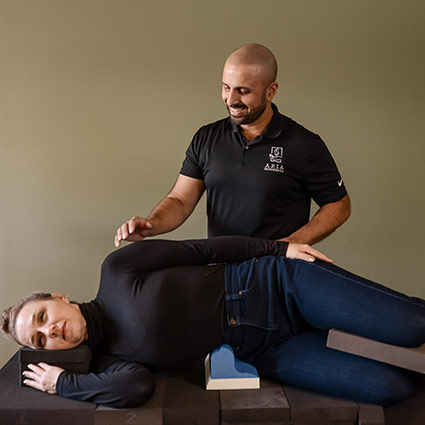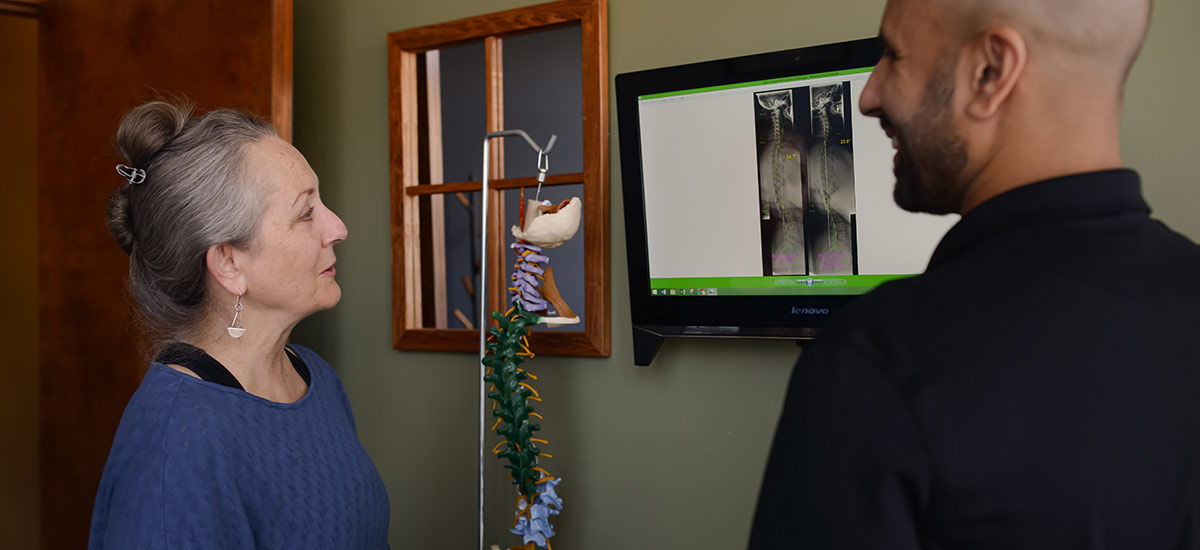
Advanced Care for Scoliosis in Victoria
Tailored to You at Every Stage of Life
Scoliosis affects more than just how your spine looks. It can shape your quality of life, limit comfortable movement, and impact long-term wellness. Whether it begins in childhood or emerges later, this is more than a sideways curve—it’s a condition that calls for proactive attention and sound support.
At Aria Health and Wellness Clinic, we help people of all ages—from growing kids to older adults—manage scoliosis with care strategies that keep the spine strong, aligned, and mobile.
Recognizing the Early Warning Signs
Because the condition often goes unnoticed until it progresses, being alert to early signs matters. In children and teens, look for uneven shoulders or hips, a visible spinal curve, one shoulder blade sticking out more, waist asymmetry, or trouble standing up straight.
Adults may experience these same signs along with fatigue, stiffness, or a noticeable twist in posture. A simple at-home test: bend forward with arms hanging loosely. If one side of the back or ribs appears higher or more rotated, it’s time to seek a professional evaluation.
Helping Kids Through Key Growth Years
Scoliosis is most often diagnosed during growth spurts, particularly between ages 10 and 18. It tends to occur more in girls, though boys can be affected. Genetics often play a role, so if one child has the condition, siblings should also be checked.
Early detection gives us the best chance to slow or stop progression. Our assessments include posture checks, the Adams Forward Bend Test, and scoliometer measurements. We’ll recommend X-rays to evaluate the severity and curve pattern if needed.
To support your child’s development and reduce the chance of surgical intervention later, we may recommend targeted therapies like Scolibalance® exercises, Scolibrace® 3D bracing, and traction-based treatment options.

Relief and Realignment for Adults
Adult scoliosis, or de novo scoliosis, can develop in adolescence or appear later in life due to spinal wear and tear. It affects one in three people over 65 and half of those over 80. Pain, stiffness, and reduced flexibility are common, but progression isn’t inevitable.
We take a conservative-first approach, combining traction therapies, structural correction techniques, and rehab-based exercises to stabilize your spine and relieve discomfort. For many adults, this strategy improves mobility, posture, and day-to-day function, without the need for surgery.
What to Expect from Scoliosis Care
Each person’s scoliosis is different. That’s why we begin with a thorough consultation and assessment, including posture scans and imaging when needed. We then tailor a care plan based on your age, spinal pattern, and lifestyle.
Your care may include:
- Scolibalance® exercises—Curve-specific training to improve body awareness and encourage natural correction
- CBP® multivector traction therapy—Adjusts spinal alignment across multiple planes
- Mirror Image® adjustments and exercises—Rebuilds posture through repetition and retraining
- Scolibrace® bracing—Custom 3D braces that help guide spinal support and reduce curve advancement
We also consider your muscle strength, joint function, and daily habits—like sleep posture or device use—because those factors influence long-term spine health.
Frequently Asked Questions
Yes, at least in adolescent scoliosis, which appears to have a genetic component. About 5% of adolescents develop scoliosis that can be traced to inherited factors. In contrast, adult-onset scoliosis (de novo) is more commonly tied to degeneration, trauma, or unaddressed spinal imbalances over time.
How can I tell if I or my child has scoliosis?
Look for uneven shoulders, hips, or waist; one shoulder blade sticking out; or visible twisting when bending forward. These signs are common in both children and adults. A chiropractor can perform specific tests and imaging to confirm.
Is scoliosis considered a disability?
It depends. Some individuals with mild curves live completely unrestricted lives—even Olympic athletes have scoliosis. However, in severe cases requiring surgical intervention (typically curves over 40 degrees), scoliosis may qualify as a disability due to reduced mobility and chronic pain. Our goal is to provide care that avoids surgery whenever possible.
What’s the best age to get checked for scoliosis?
Ideally, children should be assessed around age 10 and monitored regularly through puberty. Adults should seek evaluation if they notice any structural changes, discomfort, or decreased mobility. The sooner we catch it, the better the outcome.
Scoliosis isn’t usually reversible, but with the right care, we can often stop its progression and significantly reduce its impact. Conservative therapies have been shown to improve alignment, ease discomfort, and help patients maintain an active lifestyle.
Your Spine Deserves a Thoughtful Approach
Scoliosis doesn’t come with a one-size-fits-all solution—but that doesn’t mean you’re out of options. Whether you’re a concerned parent or managing changes as an adult, we’re here with the tools and care to support you.
Book your personalized assessment today and take a step toward greater strength and stability.

